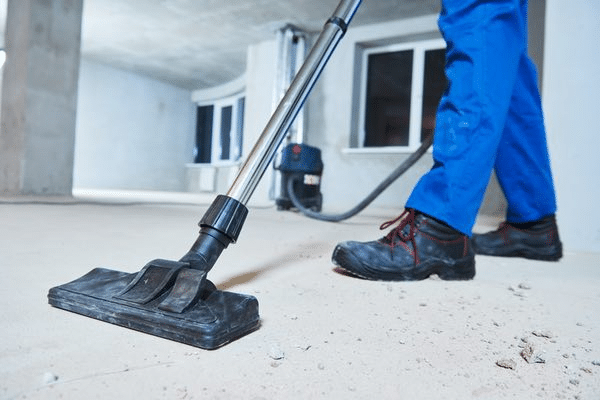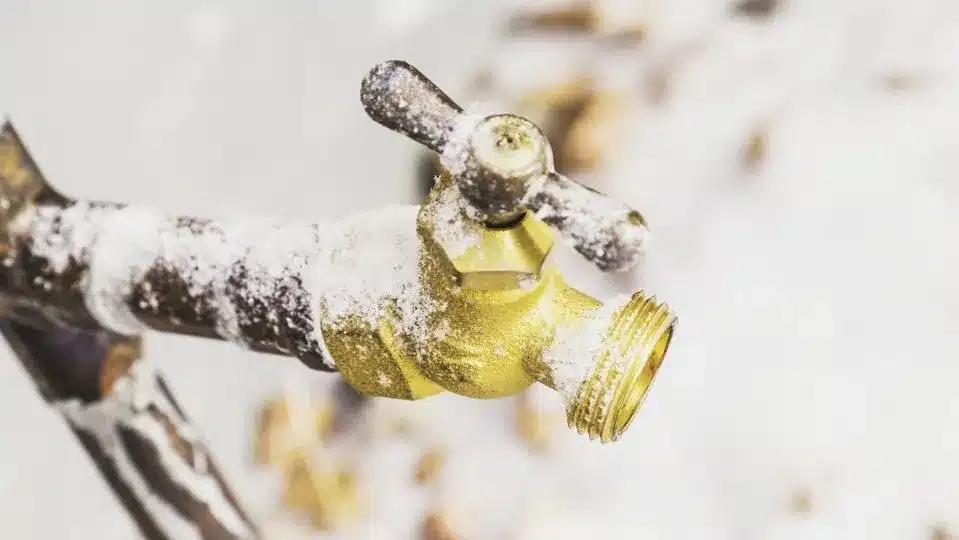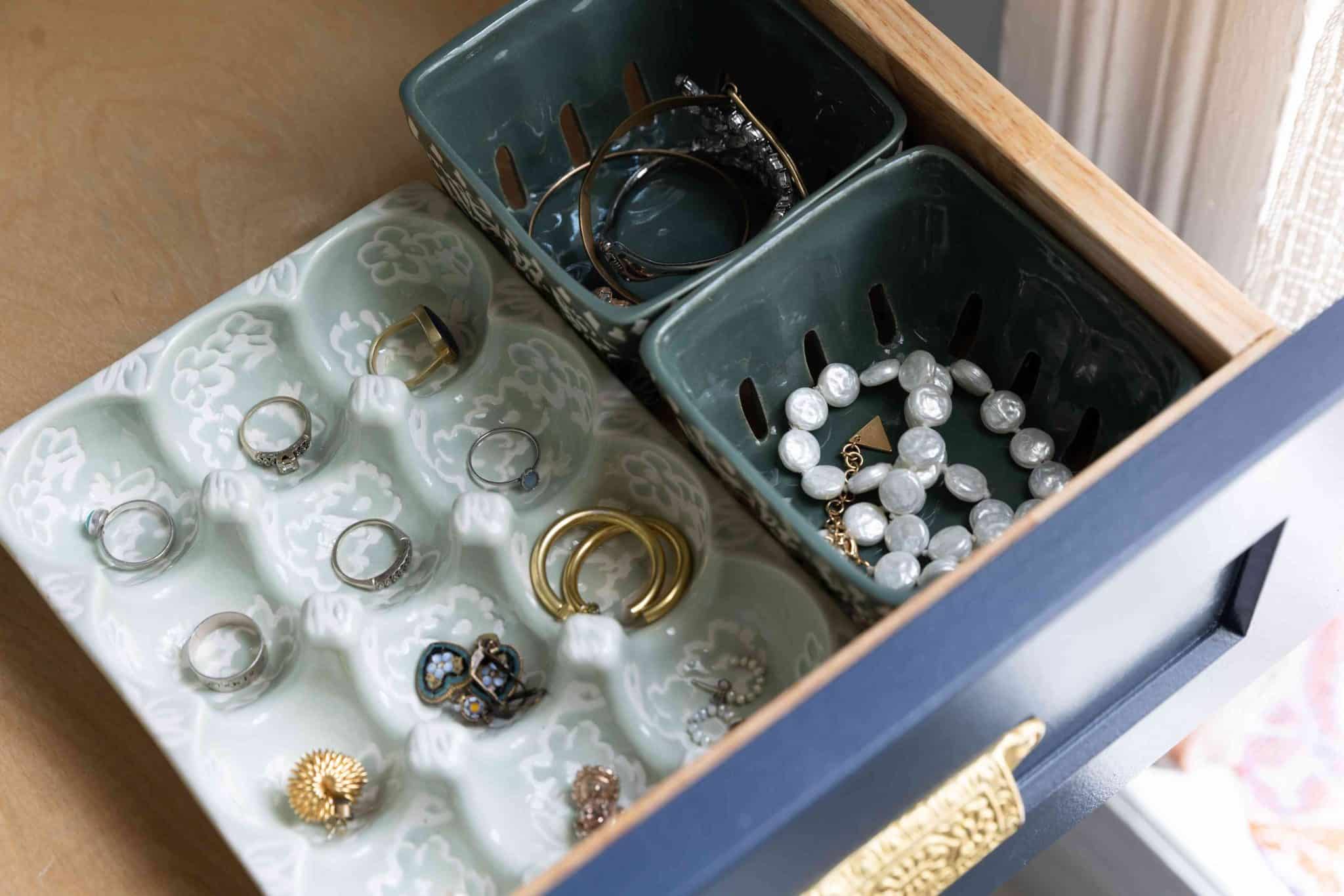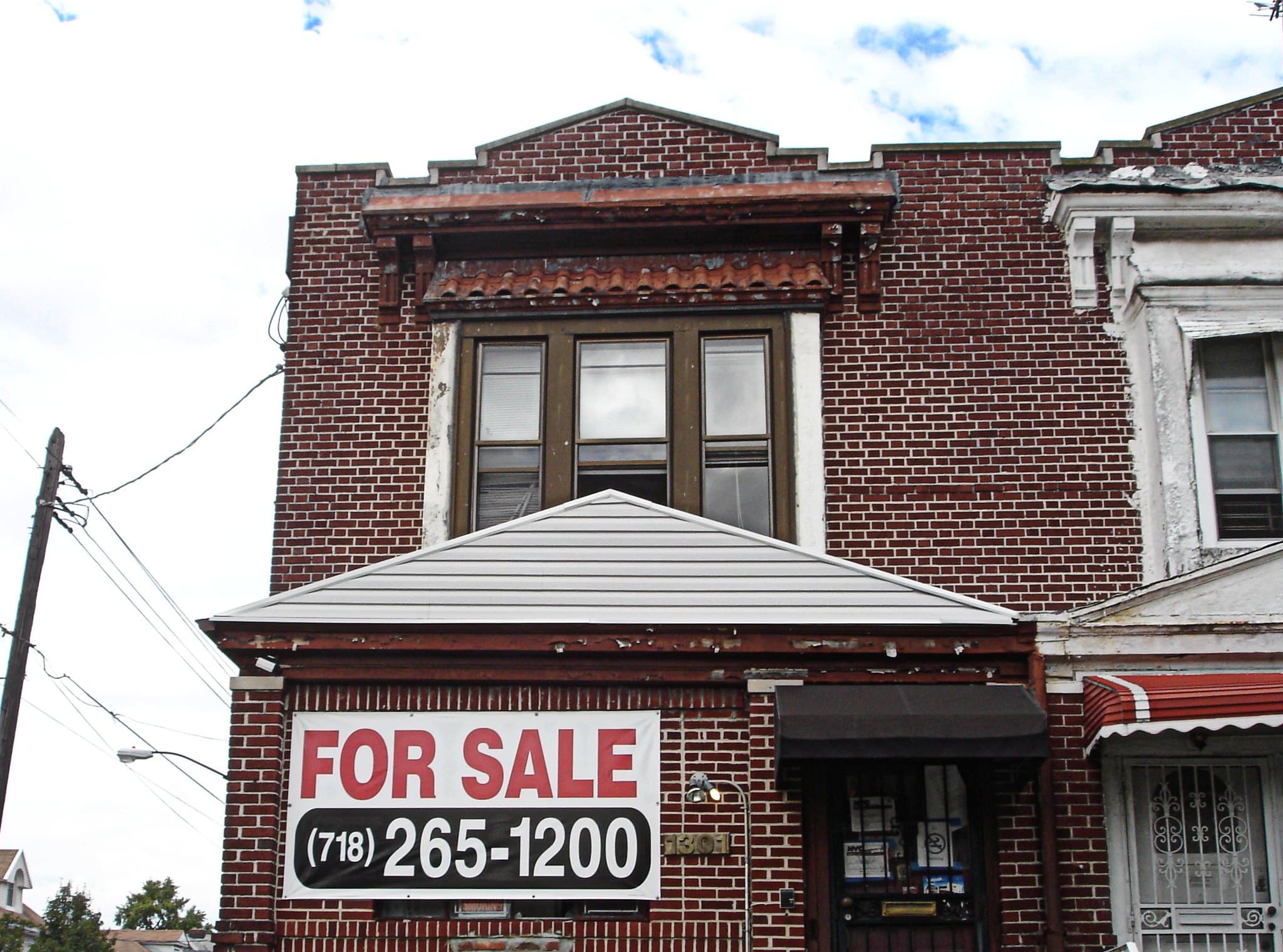Ultimate Checklist for Post-Renovation Cleaning
It’s time to bring new life to your living space with a renovation! After the dust has settled and construction is finished, it’s time to start post-renovation cleaning. This isn’t an easy task, so make sure you have the right checklist on hand.
First, dust every surface – from top to bottom – making sure you don’t miss any nooks or crannies. Pay attention to places like fans, light fixtures, and air vents which accumulate lots of dust during renovations.
Next, clean your windows. Paint splatters and grime can make them look smeared. Clean each window pane inside and out and wipe down the frames too.
Flooring needs a deep clean – no matter if it’s hardwood, carpet, or tiles. Vacuum or sweep away loose dirt and tackle stubborn stains. Rent a steam cleaner for carpets and use special products for hardwood and tile flooring.
Walls and surfaces need a wipe down too. Get rid of residue left by adhesives or tape. Wipe down walls with a gentle cleaner, paying extra attention to high-traffic areas.
Finally, don’t forget about air quality. Dust and mold spores can linger in the air, so invest in an air purifier to keep the air clean and fresh.
Now you’re ready to turn your chaotic construction site into a squeaky-clean sanctuary!
Preparing for Post-Renovation Cleaning
Preparing your space for cleaning after the renovation process is a crucial step in ensuring a thorough and efficient cleanup. Here’s a concise guide to help you get started:
- Clear out debris and dust: Begin by removing any leftover construction materials, such as nails, screws, and wood scraps. Use a broom or vacuum to eliminate dust from surfaces, including walls, floors, and ceilings.
- Protect delicate surfaces: Cover any fragile or newly installed items, such as countertops or fixtures, with protective materials like plastic sheets or drop cloths. This will prevent them from getting damaged during the cleaning process.
- Organize cleaning supplies: Gather all the necessary cleaning supplies and tools, such as brooms, mops, buckets, and cleaning solutions. Keep them in one designated area for easy access during the cleaning process.
- Establish a cleaning plan: Create a systematic approach to clean your space. Start from top to bottom, ensuring that you clean all surfaces, corners, and hidden areas. Divide your space into sections and clean one area at a time to ensure thoroughness.
Additionally, ensure that you check for any specific cleaning requirements or recommendations from your contractor or renovation professional. They may provide additional instructions or tips tailored to your specific space and renovation project.
Pro Tip: To remove stubborn stains or grime, consider seeking a professional company that specialize in renovation cleaning services to ensure a spotless and polished finish for your newly renovated space.
Cleaning supplies: the only things that can tackle both post-reno mess and any lingering hope that you’ll never have to clean again.
Gathering necessary cleaning supplies
Draw up a list of cleaning supplies you’ll need for the job. Adapt it to the kind of renovation work that’s been done. Buy quality cleaning products for all surfaces. Don’t forget tools like microfiber cloths, squeegees, and mops. Use eco-friendly products if possible. And don’t forget protective gear like gloves and masks.
Be well-prepared for the post-reno cleanup. It’ll make the task easier and efficient while keeping things clean and hygienic.
Clearing out the workspace
Here’s a five-step guide to help you get your workspace sorted!
- Start by removing any large items, such as furniture, appliances, or equipment. This will make it easier to move around and clean the area.
- Sift through smaller items and classify them into categories, like tools, supplies or personal belongings. Throw out anything that’s no longer needed or damaged beyond repair.
- Pack away valuable or fragile items safely, labelling each box clearly for easy identification when you unpack later.
- Clean and organize storage areas, like cabinets, drawers and shelves. Chuck out any expired or unused materials to create more space and store essential items properly.
- Sweep or vacuum the floors to clear away dirt and debris before you start the post-renovation clean.
Remember to take safety precautions while clearing out the workspace. Wear protective gear like gloves, masks and goggles to avoid potential hazards.
By following these guidelines, you can clear out your workspace quickly and safely. This will make sure your work or living space is safe and tidy for post-renovation cleaning.
Ensuring safety precautions
Secure your post-renovation area by taking the correct precautions. Shield yourself and others from potential threats with these steps:
- Use protective caps or tape to cover any exposed electrical outlets and wires.
- Put on personal protective equipment, like gloves, safety goggles, and masks, to guard against dust and debris.
- Keep hazardous materials away from kids and pets in a separate area.
- Be careful when walking around the renovated area. Keep pathways free of mess and tripping hazards.
- Dispose of construction waste, such as sharp objects and chemicals, according to local laws.
- Bring in a professional cleaning service to make sure the space is safe and clear of any debris or pollutants.
Moreover, pay attention to safety concerns specific to your renovation project.
Cleaning List:
- Vacuum up construction debris
- Wipe down paint splatters (good luck!)
- Yell into a pillow when you see the dust on your brand new countertops!
Post Renovation Cleaning Checklist
A post-renovation cleaning checklist is a must-have for ensuring a thorough and efficient cleaning process after a renovation project. It helps to ensure that all areas are cleaned properly and no corner is left untouched. Here are the key points to consider:
- Deep Cleaning: Begin by dusting all surfaces, including walls, ceilings, and floors. Clean all windows, doors, and fixtures thoroughly. Pay extra attention to areas that accumulated construction dust such as air vents and electrical outlets.
- Sanitizing and Disinfecting: After removing dust and debris, sanitize and disinfect all surfaces to eliminate any germs or bacteria. This step is crucial for creating a healthy and safe environment, especially in areas like kitchens and bathrooms.
- Final Touches: Once the deep cleaning and sanitizing are complete, focus on the finishing touches. This includes mopping floors, vacuuming carpets, polishing mirrors and glass surfaces, and organizing the space to make it ready for use.
While following this checklist, it is important to remember to prioritize safety. Use appropriate cleaning products and tools, and wear protective gear if necessary. Additionally, it is recommended to seek professional help for tasks that require specialized knowledge or equipment, such as cleaning delicate surfaces.
To maintain the cleanliness and freshness of the renovated space, regular cleaning and maintenance are essential. By adhering to this comprehensive checklist, you can ensure a successful post-renovation cleaning process that leaves your space spotless and ready to be enjoyed.
Cleaning the floors: the moment when the satisfaction of a shiny, spotless surface outweighs the regret of using your body as a mop during renovation.
Cleaning the floors
- Begin by clearing any mess or dirt from the floor. Sweep or vacuum to make sure all nooks and crannies are dust-free.
- After that, mix up a cleaning solution based on your floor type. For wooden or laminate floors, use a small amount of mild detergent in warm water. Pick a special floor cleaner for tile or vinyl floors, to avoid damage.
- Next, dip a mop or microfiber cloth in the cleaning solution and wring out the excess. Start mopping in straight lines, covering all areas, even hard-to-reach spots.
- When done, let the floor dry before you walk on it again. This way, there won’t be any streaks or smudges, and you’ll get a neat finish.
- You can also take extra steps to improve your floor-cleaning. Use separate mops for different rooms to avoid cross-contamination. Place doormats at each entrance to prevent dirt from spreading on the clean floors.
By following these tips and doing regular cleaning, you can keep your floors looking great and make them last longer. So, get ready to show off your spotless floors and enjoy the beauty they bring to your home!
Wiping down surfaces
Get ready to outsmart the dirt ninjas! Cleaning surfaces is a crucial detail for keeping your home clean, hygienic, and free of disease-causing germs.
Choose the right cleaning product for each surface – mild soap and water for some, disinfecting cleaners or specialized solutions for others.
Use gentle yet thorough motions with a microfiber cloth. Don’t forget those hard-to-reach areas!
Finally, do periodic deep cleans to battle grime buildup. With consistent cleaning efforts, you have a happy, healthy home!
Removing dust and debris
For a dust-free home, try these tips:
- Dust with a microfiber cloth or feather duster to trap particles without spreading them.
- Vacuum carpets & upholstery, using attachments for corners & crevices.
- Sweep hard floors with a broom or use a damp mop.
- Wipe surfaces with a mild cleaner or disinfectant wipe.
- Clean air vents & filters often to prevent dust buildup & boost air quality.
- Remember to empty & clean vacuum bags or canisters after each use.
Proper dusting not only makes your home spotless, but also helps create a healthier environment! Plus, you can finally see yourself reflected in something other than a romantic comedy when you clean windows & mirrors.
Cleaning windows and mirrors
Windows and mirrors can sparkle with clarity if given some TLC. For a spotless reflection, a few cleaning techniques and an eye for detail are necessary. Let’s explore the art of cleaning windows and mirrors!
- Utilize a lint-free or microfiber fabric to wipe away dirt and fingerprints. Begin from the top and work your way down.
- For a streak-free finish, try a concoction of water and vinegar.
- Pay extra attention to corners and edges to remove any blemishes.
- Don’t forget about window screens! Remove them carefully, clean them properly, and let them dry before reinstalling.
And don’t forget to clean both sides of the glass surfaces! With these tips, your windows and mirrors will be as good as new, bringing brightness into any room.
Now, ready to clean the bathroom? Be sure to wear a hazmat suit and bring your sense of humor – things are about to get wild!
Sanitizing the bathroom
Sanitize your bathroom easily by following these simple steps!
- Gather your supplies, like disinfectant sprays, toilet cleaner, gloves and microfiber cloths.
- Start with the toilet bowl – apply toilet cleaner under the rim and scrub it. Don’t forget to clean the exterior surfaces too.
- Next, focus on the sink and countertops. Use disinfectant spray or wipes to clean them, including faucets and handles.
- Time to tackle the shower or bathtub area. Clean tiles or walls with cleaning solution and scrub away any soap scum or grime. Don’t forget to clean the shower curtains or glass doors.
- Don’t overlook smaller areas like mirrors, light fixtures and towel racks. Glass cleaner for mirrors and dampen a cloth with disinfectant solution for other surfaces.
- Finally, sweep or vacuum the floor for loose dirt and hair particles before mopping it.
- Don’t forget to replace towels regularly and empty trash bins. Also, clean bathroom accessories, like toothbrush holders and soap dispensers, for overall sanitization.
By following this guide, your bathroom remains sanitized and free of germs. Providing a healthy environment for you and your family!
Cleaning the kitchen area
Gather the supplies for cleaning first. This may include a multipurpose cleaner, microfiber cloths, scrub brushes, dish soap, and gloves. This will make the job easier.
Here’s a 3-step guide to cleaning the kitchen:
- Clear countertops and surfaces. Take off items like appliances, cutting boards, and utensils. Wipe away bits of food and spills with a damp cloth. Disinfect surfaces with a multipurpose cleaner.
- Clean the sink and faucet. Scrub the sink basin with a mild cleanser or dish soap. Don’t forget the edges. Use a toothbrush or small brush for hard-to-reach spots. Rinse and polish the faucet.
- Appliances and cabinets. Wipe down all appliances like the microwave, oven, and refrigerator. Clean cabinets with warm soapy water and pay attention to handles and knobs.
Maintaining cleanliness in your kitchen is important. Wash dishes after use, sweep or vacuum floors, and empty trash bins often. Follow these practices for a clean and functional kitchen. Cleanliness affects your cooking experience. So keep the space clean and sanitized for a healthy and enjoyable time spent cooking.
Removing paint splatters or stains
Paint splatters or stains can be a real eyesore. To get rid of them, you need to know the type of paint. For latex or water-based paints, mix warm water and mild detergent. Gently scrub with a soft cloth or sponge. If it’s oil-based, use a paint thinner or solvent. Dab the stained area carefully with a clean cloth. For dried-on paint, scrape away with a plastic putty knife. To prevent damage, cover surfaces with drop cloths or plastic sheeting before painting. Ready to fight crime with your cleaning skills?
Deep Cleaning Specific Areas
When it comes to thoroughly cleaning specific areas after a renovation, there are a few key steps you should follow. Begin by focusing on deep cleaning specific areas:
- Start with the kitchen. Clean the oven, stove, and microwave thoroughly, removing any grease and food residue. Scrub the sink, countertops, and backsplash, and wipe down all appliances.
- Move on to the bathroom. Scrub the shower and bathtub, including the tiles and grout. Clean the toilet, sink, and vanity, making sure to remove any soap scum or water stains. Don’t forget to clean the mirrors as well.
- Clean the floors. Vacuum or mop all hard floors, making sure to reach into corners and under furniture. For carpeted areas, consider steam cleaning to remove any dirt or dust that may have accumulated during the renovation.
- Finally, don’t overlook the walls and ceilings. Dust and wipe down all surfaces, paying close attention to high traffic areas and areas near renovation work. Consider using a mild detergent for any stubborn stains or marks.
For a truly thorough post-renovation cleaning, don’t forget to address these specific areas. By following these steps, you can ensure that your space is clean and ready for use once again.
True Fact: According to the American Cleaning Institute, a thorough cleaning after a renovation can help improve indoor air quality and reduce the risk of allergies.
Cleaning carpets or rugs after a renovation is like finding a needle in a haystack, except the needle is covered in dust and the haystack is your entire living room.
Deep cleaning carpets or rugs
- Start off by removing any furniture or obstacles from the area.
- Vacuum with a high-quality cleaner to remove dirt and debris.
- Tackle tough stains using a carpet cleaner or stain remover. Gently blot with a clean cloth.
- Go for either a steam cleaner or a professional cleaning service to deep clean the carpets or rugs.
- When dry, put furniture back in the area.
- Try using eco-friendly products safe for both carpets and family. Deep cleaning carpets or rugs regularly can keep them looking great and last longer.
Scrubbing tiles and grout
- Start with sweeping or vacuuming the area to get rid of any loose dirt.
- Mix a cleaning solution with warm water and a mild detergent or tile cleaner.
- Use a scrub brush or an old toothbrush to apply the solution and scrub in circular motions.
- Pay special attention to the grout lines. Clean them well with a grout brush or a small scrub brush.
- Rinse the tiles with clean water and wipe them dry with a clean cloth.
- Go crazy with vinegar or baking soda for a sparkly finish! Mix with water to make a paste, apply to the tiles, wait a few minutes, then scrub and rinse.
- Do regular maintenance to keep your tiles and grout looking great. Avoid harsh chemicals or abrasive cleaners that can damage them. With these steps, you’ll have clean and shiny tiles forever!
Cleaning air ducts and vents
Air ducts and vents are super important for good air quality. Cleaning them is a must to guarantee a healthy home. Here’s some things to bear in mind when it comes to cleaning:
- Remove dust and debris.
- Stop mold growth.
- Boost energy efficiency.
- Eradicate nasty smells.
- Lessen allergy symptoms.
- Keep HVAC system working longer.
Cleaning air ducts and vents is essential for a healthy home. Also, professional services are available to deep-clean the hard-to-reach places. Investing in regular maintenance will help your HVAC system perform better and improve air quality. Battle the dust and allergies – no heroes or explosions required!
Removing any residual construction dust
To get rid of construction dust, here’s what to do:
- Gather cleaning supplies like a broom, mop, vacuum with HEPA filter, microfiber cloths, and a bucket with warm water and mild detergent.
- Start by dry cleaning with the broom or vacuum with brush attachment. Pay attention to corners and hard-to-reach spots.
- Dampen cloth with the soapy water solution and wipe down all surfaces.
- For tougher spots, use the soapy water solution and scrub gently. Be careful not to damage delicate finishes.
- Mop floors with the soapy water solution – wring out excess liquid before mopping.
- Ventilate during and after cleaning, and use an air purifier to capture any remaining airborne particles.
Follow these steps for a hassle-free clean.
Final Touches
The last touches, the finishing details, the conclusive embellishments – these are the critical elements that bring a sense of completion to any post-renovation cleaning process. They encompass those final steps that add a pristine shine to the newly renovated space, ensuring that every nook and cranny is immaculate. From wiping down surfaces to polishing fixtures, these ultimate steps transform a recent renovation into a thoroughly refreshed and polished environment. With unwavering attention to detail, the final touches deliver that coveted feeling of a truly finished project.
Don’t just polish surfaces, give them a shine that’s so blinding, you’ll need sunglasses just to look at your own reflection.
Polishing surfaces
Polishing surfaces involves several elements. Different materials need unique approaches to get the desired shine. Metals, plastics, wood, glass, and stone have distinct properties that must be considered.
Tools like sandpaper, polishing compounds, buffing wheels, and abrasive pads help remove blemishes. The techniques used depend on the material. For instance, metal may need sanding, buffing, and a coat of protection. Wood may need sanding and multiple coats.
Finishing touches like waxing or coatings can improve the appearance and protect it. Attention to detail and the right materials and techniques can help professionals get great outcomes.
Organizing and arranging furniture
- Measure and evaluate the dimensions of your room to work out the available space. Take note of any focal points that could influence furniture placement.
- Divide your room into zones, group furniture accordingly. Consider the size of the pieces in relation to the room. Don’t overcrowd and remember to leave enough room for movement.
- Complete the arrangement with rugs, curtains, and decorative items. Have fun with colors, textures, and patterns.
- Find the perfect balance of functionality and aesthetics.
- Show off your unique style and personality with creative touches.
- Transform your living space into a haven with attention to detail and planning.
Adding personal touches
When it comes to incorporating personal stories or anecdotes, I can’t help but recall my own experience visiting Gardens by the Bay in Singapore. It was a sunny morning, and as I entered the horticultural park, I was immediately drawn to the vibrant colors and lush greenery. Walking through the Flower Dome, I was surrounded by a breathtaking display of flowers from around the world. The scents and beauty of the blooms transported me to a world of serenity and tranquility.
As I ventured into the Cloud Forest, I couldn’t contain my excitement. The mist from the indoor waterfall cooled my skin as I made my way through the tropical mountain. The educational signs along the paths not only provided valuable information about the unique plants and their adaptations, but also sparked my curiosity to learn more about our natural world.
Adding to the magic of my visit were the personal photographs I took throughout the day. Capturing the mesmerizing moments and vibrant colors of the gardens helped me relive the experience later and share it with my friends and family. These visuals truly amplified the message and emotions I wanted to convey.
Now, let me express my personal perspective on the matter. Gardens by the Bay is not just a tourist attraction, it is a sanctuary where nature and urban life seamlessly coexist. The dedication and creativity behind creating such a stunning horticultural park is truly remarkable. It is a testament to our ability to appreciate and preserve the beauty of our planet.
As I conclude my reflection on my visit to Gardens by the Bay, I can’t help but emphasize the importance of paying attention to the small details that make an experience unique. From the delicately crafted floral arrangements to the well-maintained pathways, every detail reflects the care and passion invested in this remarkable place. It is these little nuances that add depth and authenticity, making a visit to Gardens by the Bay truly unforgettable.
In the end, adding these personal touches to my recounting of my visit to Gardens by the Bay adds flavor and personality to my story. It engages the audience on a deeper level, evoking emotions and a sense of connection. Through my words, visuals, and perspective, I hope to inspire others to explore this enchanting horticultural park and create their own unforgettable memories.
Conclusion
Post-renovation cleaning is a must to finish any home renovation project. Doing so guarantees your new place is clean, safe, and ready to use. Follow this checklist to easily clean up after the project is done.
- Dust and debris removal is key. Sweep or vacuum the floors to remove any dirt. Then, wipe all surfaces, like walls, windowsills, countertops, and cabinets, to get rid of dust. Clean the air vents too to stop dust from spreading throughout the house.
- Focus on the details too. Give extra attention to light fixtures, ceiling fans, and baseboards. They usually get overlooked but can gather a lot of dust during renovation.
- Deep clean any furniture or appliances exposed to construction dirt or debris too. Use the right cleaning products to do this.
- Don’t forget about ventilation either. Change the filters and get a professional HVAC inspection to improve air quality after renovation.
- Finally, safety is essential. Make sure all electrical outlets are working properly. Double-check smoke and carbon monoxide detectors are functioning as well.







